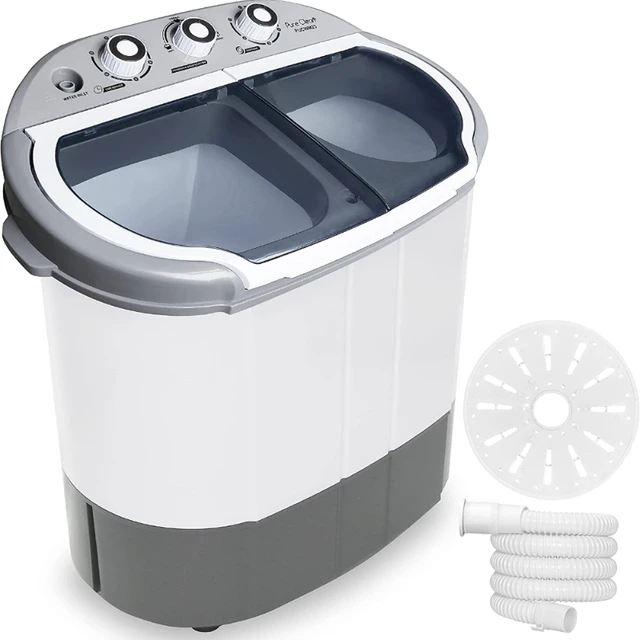When it comes to washing delicate fabrics, wool often tops the list of materials that require special care. This versatile and insulating fiber is cherished in various clothing items, from cozy sweaters to elegant scarves. But the question remains: Can you wash wool in the washing machine? This inquiry gets to the heart of balancing convenience with the need to preserve the integrity of your woolen garments. Let’s explore how to safely wash wool in a machine, ensuring that your cherished items remain in excellent condition.
Understanding Wool’s Properties
To fully appreciate why wool requires careful handling, it is essential to understand its unique properties. Wool fibers are protein-based, with a structure that includes overlapping scales, giving it the ability to insulate effectively and absorb moisture.
- Elasticity: Wool can stretch considerably without breaking, which contributes to its durability.
- Insulation: The natural crimp in wool fibers creates tiny air pockets that help retain heat, making wool an excellent insulator.
- Absorbency: Wool can absorb up to 30% of its weight in moisture without feeling wet, which allows it to remain warm even when damp.
- Pilling and Shrinking: When agitated in water, the scales on wool fibers can interlock, leading to pilling and shrinkage if not handled correctly.
Understanding these properties highlights why wool needs gentle care, particularly when washed in a machine.
Traditional Wool Washing Methods
Historically, wool garments have been synonymous with the words “hand wash only.” However, hand washing, while effective, can be time-consuming and labor-intensive.
- Hand Washing: Traditionally, wool items are washed by hand in lukewarm water with mild soap. This method reduces agitation, minimizing the risk of felting and shrinkage.
- Dry Cleaning: Professional dry cleaning is another recommended option, particularly for wool garments with complex weaves or embellishments that might be damaged by water.
These traditional methods underscore the need for care and precision when cleaning woolen items, keeping their delicate nature in mind.
Modern Advances in Machine Washing
With advancements in washing machine technology, the idea of machine washing wool has become more feasible. Modern machines offer specific cycles designed to handle delicate fabrics like wool.
- Wool Cycle: Many washing machines now come equipped with a wool cycle, which uses gentler agitation and specific water temperatures to clean wool without causing damage.
- Temperature Control: Modern machines have precise temperature control to ensure the water stays within a safe range (usually cold or lukewarm) for wool washing.
- High Efficiency: Efficient water extraction through gentle spin cycles can help maintain the shape and quality of wool garments.
These technological improvements suggest that, under the right conditions, you can wash wool in a washing machine.
Choosing the Right Detergent
One key aspect of washing wool lies in selecting the appropriate detergent. Regular laundry detergents can be too harsh, so it’s crucial to opt for wool-specific detergents.
- Wool-Safe Detergent: These detergents are free from enzymes and harsh chemicals that can damage wool fibers. Look for products specifically labeled as wool-safe.
- Mild Liquid Detergents: Mild liquid detergents without bleaching agents or optical brighteners are also acceptable alternatives.
- Avoiding Fabric Softeners: Fabric softeners can coat wool fibers, diminishing their natural softness and insulating properties.
Using the right detergent ensures that your wool garment is cleaned gently and effectively without compromising the fabric’s integrity.
Preparing Wool Garments for Washing
Before placing wool items in the washing machine, proper preparation is crucial to avoid damage.
- Read the Care Label: Always check the garment’s care label for specific instructions. Some wool items may not be machine washable even on delicate settings.
- Turn Inside Out: Turn the garment inside out to protect the fibers on the outer surface from friction and reduce pilling.
- Use a Mesh Bag: Placing wool items in a mesh laundry bag can further protect them from the machine’s agitation.
Taking these preparatory steps can make a big difference in how well your wool garments fare during machine washing.
Selecting the Washing Machine Settings
Choosing the correct settings on your machine is the next critical step in ensuring a safe wash for wool garments.
- Wool or Delicate Cycle: Select the wool or delicate cycle on your washing machine. These cycles use lower agitation and gentler motions.
- Cold or Lukewarm Water: Avoid hot water, as it can cause wool to shrink and felt. Stick to cold or lukewarm water settings.
- Low Spin Speed: Use a low spin speed to minimize the stretching and agitation of the fibers. High spin speeds can cause the wool to lose its shape.
These settings help mimic the gentle conditions required for washing wool, reducing the risk of damage.
Washing Process
With everything set up, it’s time to start the washing process.
- Loading the Machine: Place the prepared wool garment into the washing machine. Make sure not to overload the machine, as this can increase agitation.
- Adding Detergent: Add the wool-safe detergent according to the manufacturer’s instructions. Using too much detergent can leave residue, making wool feel soapy or sticky.
- Starting the Cycle: Start the machine on the selected wool or delicate cycle. Monitor the wash to ensure everything operates smoothly.
These steps guide you through the actual cleaning process, ensuring your wool garment is treated with care.
Drying Wool Garments
Drying wool correctly is as important as washing it properly. Incorrect drying can lead to significant shrinkage and deformation.
- Avoid the Dryer: Never put wool garments in a tumble dryer. The combination of heat and tumbling can drastically shrink and damage wool.
- Flat Drying: Lay the wool item flat on a clean towel, gently reshaping it to its original dimensions. Avoid hanging, as this can stretch the fibers.
- Air Circulation: Place the towel with the garment in a well-ventilated area. Avoid direct sunlight and heat sources, which can affect the wool fibers negatively.
Correct drying techniques ensure that wool retains its shape and softness after washing.
Addressing Common Concerns
Concerns about machine washing wool typically arise from the risks of shrinkage and felting. Here are ways to mitigate these issues.
- Shrinkage: Sticking to cold or lukewarm water and using gentle cycles minimizes the risk of shrinkage.
- Felting: Reducing agitation and avoiding hot water prevents the wool fibers from matting together, which causes felting.
- Pilling: Using a mesh laundry bag and turning garments inside out can reduce pilling, maintaining a smooth surface.
Understanding these concerns allows you to take preventive measures, ensuring the best results.
Frequency of Washing
Wool garments do not need frequent washing. Over-washing can lead to wear and reduce their lifespan.
- Spot Cleaning: For minor stains and odors, spot cleaning is often sufficient and reduces the need for full washing.
- Airing Out: Wool has natural antibacterial properties, so airing out garments between wears can keep them fresh without washing.
- Washing Based on Use: Frequent use items like socks might need more regular washing, whereas sweaters and coats can be washed less often.
Balancing washing frequency with the natural properties of wool ensures longevity and cleanliness.
 Storage Tips for Wool
Storage Tips for Wool
Proper storage between wears and after washing is essential for maintaining wool’s quality.
- Clean Before Storing: Always wash wool garments before storing them for long periods to avoid moth damage.
- Cool, Dry Place: Store wool in a cool, dry place. Avoid plastic bags, which can trap moisture and lead to mildew.
- Natural Moth Repellents: Use cedar balls or lavender sachets to keep moths at bay without using harsh chemicals.
Storing wool correctly contributes to its longevity and appearance.
Eco-Friendly Washing Practices
Being mindful of the environment while washing wool is both beneficial and sustainable.
- Energy Efficiency: Use energy-efficient settings and cold water to reduce energy consumption.
- Biodegradable Detergents: Opt for biodegradable and eco-friendly wool detergents to minimize environmental impact.
- Water Conservation: Wash full loads where possible to conserve water without compromising on garment care.
Incorporating eco-friendly practices ensures sustainability in your laundry routine.
Professional Cleaning Alternatives
For particularly delicate or expensive wool garments, professional cleaning services offer a reliable alternative.
- Professional Hand Washing: Some services specialize in hand washing wool, combining expertise with gentle care.
- Steam Cleaning: Steam cleaning can refresh wool garments without full immersion, removing odors and minor wrinkles.
- Dry Cleaning: While not always the first choice, professional dry cleaning can handle complex wool garments with care.
Utilizing professional services for delicate items ensures optimal care and cleaning.
Conclusion
So, can you wash wool in the washing machine? Yes, with the advancements in modern washing machines and by following specific guidelines, you can safely wash wool in a machine. Key factors include using the right detergent, selecting appropriate machine settings, and ensuring proper preparation and drying techniques. Understanding wool’s unique properties and addressing common concerns further enhance the process. By balancing traditional care methods with modern conveniences, you can maintain the luxury and durability of your wool garments, ensuring they remain a cherished part of your wardrobe for years to come.


